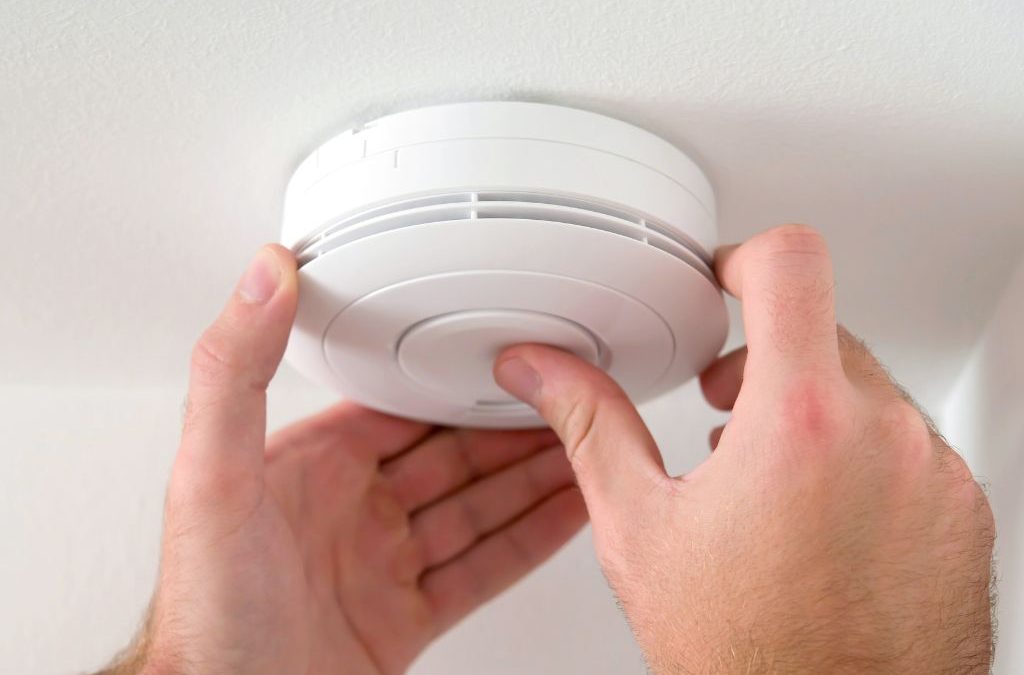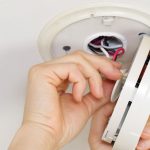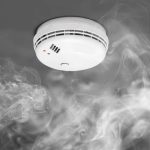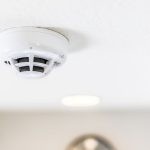On a normal day, you don’t even look up and notice that smoke alarm. And when it does go off and you want to stop that high-pitched screeching, all you want to do is reach up and press that most noticeable button – the ‘hush’ or ‘silence’ button. But did you know the smoke alarm laws in Queensland and beyond make multiple references to the smoke alarm test button, too?
Is testing smoke alarms compulsory?
Under those laws, it’s actually compulsory to regularly test your smoke alarms. That’s because it’s absolutely critical that your smoke alarms are powered and working perfectly to detect those early first signs of a potentially devastating fire. Luckily, to test smoke alarm devices, it almost couldn’t be simpler. Hit the smoke alarm test button, and if those components, sensors, batteries and circuitry are all working as they should, the alarm goes off.
But did you know there are 2 other reasons to test smoke alarms, too?
Why hit the smoke alarm test button?
- To verify the alert: You don’t just want to hear that high-pitched squeal simply to check the alarm works. You also want to know how it will sound when it goes off from various parts of your property including from outside.
- To familiarise the household: You also want all members of the family to hear what the smoke alarm sounds like in case it’s ever alerting them to a real emergency.
In Queensland’s smoke alarm laws, cleaning and testing of smoke alarms is required at least once every 12 months – but there’s nothing stopping you doing it more often. In fact, we recommend you hit that test button once a month – because if you only test it annually, you could basically be unprotected by your smoke alarm for literally months and months on end. The best way to remember is scheduling smoke alarm testing and servicing with your local Sunshine Coast electrician or Brisbane electrician depending on where you’re located.
How to test smoke alarm devices
So the only question left to ask is a simple one: How to test a smoke alarm? Remember, the various types, brands and models of smoke alarms are all subtly different, but we’ve made these steps so they’re generic to every single one:
1. Tell everyone in the house
You don’t want to trigger a medical episode by scaring the life out of your family members with a surprise smoke alarm test! So let everyone know that it’s only a drill.
2. Pick your time
It doesn’t really matter when you conduct the test – but in the dead of night isn’t kind to your neighbours, is it? The best time is during normal daylight hours and when as many family members as possible are home so they can familiarise themselves with the sound and functionality.
3. Get your tools
All you’ll need is a ladder or chair and your index finger!
4. Find the test button
The most prominent button on a smoke alarm is the silence/hush button – to turn off the screeching in a false alarm. But you should also be able to easily find the test button on the front or face of the unit. It will still be prominent and well marked, given the importance of regular testing.
5. Press the test button
You’ll have to press it firmly, and it will either trigger the test immediately or you’ll need to hold that button down for a second or three.
6. Check for audibility
One of the primary reasons to test a smoke alarm is to know how it sounds – from every corner of your home and even beyond those external walls. Head into the bedrooms in particular to see if will wake a peacefully sleeping person, as Queensland Fire and Emergency Services stats show that over half of all deaths as a result of fire occur between bedtime and early morning.
7. Can you hear a ‘chirp’?
If you hear your smoke alarm ‘chirp’ rather than emit that screeching 85-90 decibel full alarm sound, that means the battery needs to be changed asap.
8. Move on to the next alarm
For an interconnected smoke alarm, hitting ‘test’ on one alarm will automatically and simultaneously trigger every alarm in that connected network. If your alarms are not interconnected, you’ll need to test your alarms separately – especially for alarms on an entirely different storey.
9. Record the results
It’s not compulsory to keep a tally of your smoke alarm tests, but it’s still a good idea to jot down the date and the status of each smoke alarm for future reference.
Static Electrics can help with your smoke alarms
Need some extra help for testing smoke alarms, or did the results of your smoke alarm test reveal the need for repairs, maintenance or new installations? The local, friendly, family-operated and owned team at Static Electrics know every dotted ‘i’ and crossed ‘t’ of Queensland’s new and complex smoke alarm legislation. And not just that, we are fully licensed for smoke alarm testing and servicing including hard wired and wireless smoke alarms all across the Sunshine Coast, Brisbane and beyond – so give us a call today.














